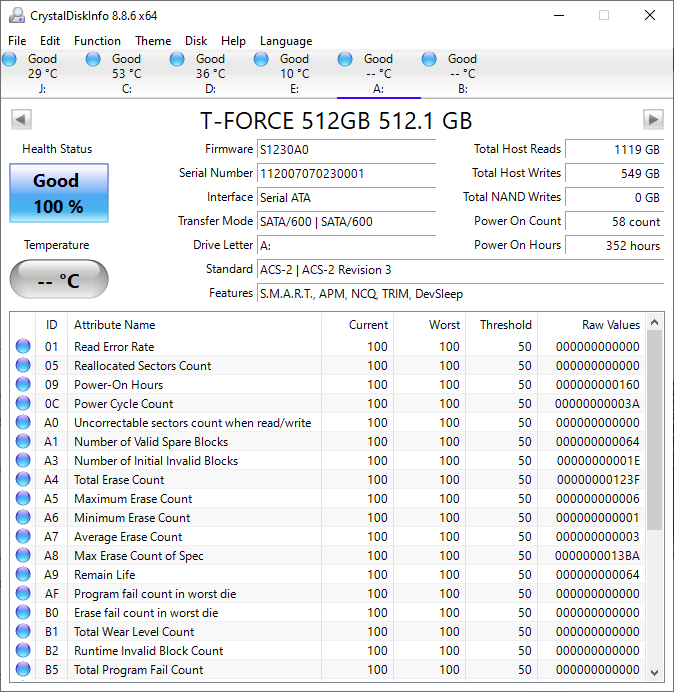Testing Procedures and Software
The first step when installing a new SSD is to format the drive. For this, we go to Windows Disk Management in order to format our 512 GB T-Force Vulcan G SSD. Once you’ve created a New Simple Volume in Disk Management and selected a drive letter, we can now use the drive. Once formatted, our 512 GB T-Force Vulcan G SSD has 476 GB of usable storage.
Crystal Disk Info is a great program that gives you extensive information on all of the drives installed in your system. This information includes everything from the temperature of the drive to its letter, serial number, and health status. Crystal Disk Infor also tells you the drives interface, total reads, total writes, and power-on hours. When this screenshot was taken, the drive had been on for a total of 352 hours and had written a total of 549 GB and read a total of 1119 GB.

For testing the T-Force Vulcan G SSD we used a Z490 testbench running a 10900k. The full specs are below.
Processor: Intel Core I9 10900k
Motherboard: Z490 Aorus Master
Graphics Card: MSI Gaming X Trio RTX 2080 ti
Memory: 64 GB of G.Skill Trident Z DDR4 3200 MHz CAS 14.
Storage (OS): 500 GB Samsung 970 Evo Plus NVMe M.2
Cooling: Custom Loop (CPU Only)
Power Supply: 1200 Watt Thermaltake Tough Power Grand 80+ Platinum
Case: Primochill Praxis Wetbench
As for software for testing our T-Force Vulcan G SSD, there are several programs we used. There are also links to download each of the benchmarks provided. The benchmarks are as follows.
Si Soft Sandra Physical Disk Benchmark
Just a quick side not on the testing. I personally had an issue with testing in Aida64. For whatever reason, the linear write test would not run. I also tried the random write test with no luck. Also, keep in mind the advertised speeds for the T-Force Vulcan G SSD are up to 550 MB/s on the read speed and 500 MB/s on the write speed. With that said, let’s get into the testing




